
Addiction to substances is a significant problem that impacts numerous individuals. It’s essential to comprehend that addiction is a disease, it’s a chronic brain disorder, not a consequence of poor decision-making or a lack of willpower. Substance use disorder is a prevalent illness that can impact individuals from all walks of life, regardless of their socioeconomic status, gender, age, or ethnicity. The use of alcohol or drugs can be influenced by various factors, including one’s environment, psychological traits, and stress levels. It’s crucial to recognize that seeking assistance is a sign of courage, and recovery is achievable.
According to the American Society of Addiction Medicine, addiction is a lifelong condition that involves compulsive sensation seeking and self-medication of a substance despite negative consequences. Seeking professional help and support is crucial to overcoming addiction.
Substance addiction can cause major disruptions in a person’s life, affecting their family, physical health, mental well-being, relationships, and career. It’s essential to recognize the harmful consequences and acknowledge the detrimental effects of addiction and seek help to overcome its negative and lifelong effects.
The harms of substance addiction can affect one’s overall quality of life. They include:
The good news is that addiction is a treatable disorder. With the help of evidence-based treatment methods, individuals can overcome substance use and regain control of their lives. Contact Rise Sobriety Center today and discover how you or your loved ones overcome substance addiction and return to living in a productive functioning environment within their family, workplace, and society.
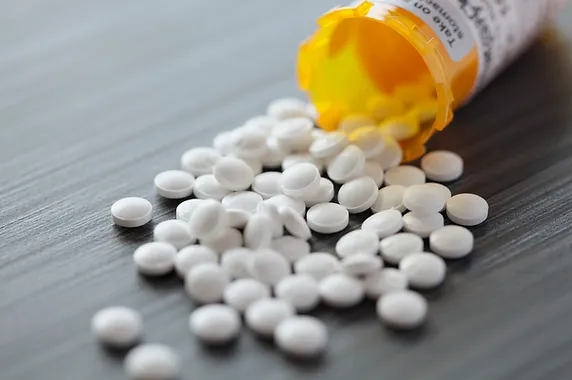
DEA: Schedule II Drug
Forms: Capsule, liquid, tablet
Ways Taken: Swallowed, snorted, injected
Hydrocodone is in a class of medications called opiate (narcotic) analgesics. It works by changing the way the brain and nervous system respond to pain.
Hydrocodone is used to relieve severe pain. Hydrocodone is only used to treat people who are expected to need medication to relieve severe pain around-the-clock for a long time and who cannot be treated with other medications or treatments. Hydrocodone extended-release (long-acting) capsules or extended-release tablets should not be used to treat pain that can be controlled by medication that is taken as needed. Hydrocodone can be habit forming, especially with prolonged use. Hydrocodone may cause slowed or stopped breathing, especially during the first 24 to 72 hours of your treatment and any time your dose is increased.
DEA: Schedule II Drug
Forms: Capsule, liquid, tablet
Ways Taken: Swallowed, snorted, injected
Oxycodone is in a class of medications called opiate (narcotic) analgesics. It works by changing the way the brain and nervous system respond to pain.
Oxycodone is used to relieve moderate to severe pain. Oxycodone extended-release tablets and extended-release capsules are used to relieve severe pain in people who are expected to need pain medication around the clock for a long time and who cannot be treated with other medications. Oxycodone extended-release tablets and extended-release capsules should not be used to treat pain that can be controlled by medication that is taken as needed. Oxycodone extended-release tablets, extended-release capsules, and concentrated solution should only be used to treat people who are tolerant to opioid medications because they have taken this type of medication for at least one week. Oxycodone may be habit-forming. Oxycodone may cause serious or life-threatening breathing problems, especially during the first 24 to 72 hours of your treatment and any time your dose is increased.
DEA: Schedule II Drug
Forms: Tablet
Ways Taken: Swallowed, snorted, injected
Oxymorphone is in a class of medications called opiate (narcotic) analgesics. It works by changing the way the body responds to pain.
Oxymorphone is used to relieve moderate to severe pain in people whose pain is not controlled with other medications. Oxymorphone may be habit forming, especially with prolonged use. Take oxymorphone exactly as directed. Oxymorphone may cause serious or life-threatening breathing problems, especially during the first 72 hours of your treatment and any time your dose is increased.
DEA: Schedule II Drug
Forms: Lozenge, tablet, film
Ways Taken: Injected, smoked, snorted
Fentanyl is a synthetic opioid medicine used to treat moderate to severe pain, it is up to 100 times stronger than other opioids like morphine, heroin or oxycodone. Fentanyl is from the class of medicines called narcotic analgesics.
Fentanyl is used to treat breakthrough pain (sudden episodes of pain that occur despite round the clock treatment with pain medication) in cancer patients at least 18 years of age (or at least 16 years of age if using Actiq brand lozenges) who are taking regularly scheduled doses of another narcotic (opiate) pain medication, and who are tolerant (used to the effects of the medication) to narcotic pain medications. Fentanyl may be habit forming, especially with prolonged use. Fentanyl may cause serious harm or death if used accidentally, even partially used by a child or by an adult who has not been prescribed the medication. Fentanyl causes high risk for addiction and dependence. Can cause respiratory distress and death when taken in high doses or when combined with other substances, especially alcohol or other illicit drugs such as heroin or cocaine. It is commonly mixed with drugs like heroin, cocaine, and methamphetamine and made into pills that are made to resemble other prescription opioids.
DEA: Schedule IV Drug
Forms: Capsule, liquid, tablet
Ways Taken: Swallowed, snorted, injected
Tramadol is in a class of medications called opiate (narcotic) analgesics. It works by changing the way the brain and nervous system respond to pain. Tramadol is used to relieve moderate to moderately severe pain in adults and children 12 years of age or older. Tramadol extended-release tablets and capsules are only used by people who are expected to need medication to relieve pain around-the-clock. Tramadol may be habit forming, especially with prolonged use. Tramadol may cause serious or life-threatening breathing problems, especially during the first 24 to 72 hours of your treatment and any time your dose is increased. Taking more tramadol than prescribed by your doctor or in a way that is not recommended may cause serious side effects or death.
DEA: Schedule II Drug
Forms: Tablet, dispersible tablet, liquid
Ways Taken: Swallowed, injected
Methadone is in a class of medications called opiate (narcotic) analgesics.
Methadone is used to relieve severe pain in people who are expected to need pain medication around the clock for a long time and who cannot be treated with other medications. It also is used to prevent withdrawal symptoms in patients who were addicted to opiate drugs and are enrolled in treatment programs in order to stop taking or continue not taking the drugs. Methadone works to treat pain by changing the way the brain and nervous system respond to pain. It works to treat people who were addicted to opiate drugs by producing similar effects and preventing withdrawal symptoms in people who have stopped using these drugs. Methadone may be habit forming. Take methadone exactly as directed. Methadone may cause serious or life-threatening breathing problems, especially during the first 24 to 72 hours of your treatment and any time your dose is increased.
DEA: Schedule II Drug
Forms: Tablet, liquid
Ways Taken: Swallowed, snorted, injected
Meperidine is in a class of medications opiate (narcotic) analgesics. It works by changing the way the brain and nervous system respond to pain.
Meperidine is used to relieve pain severe enough to require opioid treatment and when other pain medicines did not work well enough or cannot be tolerated. Meperidine acts on the central nervous system (CNS) to relieve pain. This medicine should not be used to relieve chronic (long-lasting or recurrent) pain. When meperidine is used for a long time, it may become habit-forming, causing mental or physical dependence. Meperidine may be habit forming, especially with prolonged use. Meperidine may cause serious or life-threatening breathing problems, especially during the first 24 to 72 hours of your treatment and any time your dose is increased.
DEA: Schedule II Drug
Forms: Liquid, suppository
Ways Taken: Injected, rectal
Hydromorphone is in a class of medications called opiate (narcotic) analgesics. It works by changing the way the brain and nervous system respond to pain.
Hydromorphone is used to relieve pain. Hydromorphone extended-release tablets are used to relieve severe pain in people who are expected to need pain medication around the clock for a long time and who cannot be treated with other medications. Hydromorphone extended-release tablets should only be used to treat people who are tolerant (used to the effects of the medication) to opioid medications because they have taken this type of medication for at least one week and should not be used to treat mild or moderate pain, short-term pain, pain after an operation or medical or dental procedure, or pain that can be controlled by medication that is taken as needed. Hydromorphone may be habit forming, especially with prolonged use. Hydromorphone may cause serious or life-threatening breathing problems, especially during the first 24 to 72 hours of your treatment and any time your dose is increased.
DEA: Schedule II Drug
Forms: Liquid, capsule, tablet
Ways Taken: Swallowed, snorted, injected
Tapentadol belongs to the group of medicines called narcotic analgesics (pain medicines) that act on the central nervous system (CNS) to relieve pain.
Tapentadol is used to treat pain severe enough to require opioid treatment and when other pain medicines did not work well enough or cannot be tolerated. The extended-release tablet is used to treat severe pain, including pain caused by nerve damage from diabetes. When tapentadol is used for a long time, it may become habit-forming (causing mental or physical dependence).
DEA: Schedule II Drug
Forms: Tablet, capsule
Ways Taken: Swallowed, snorted
Levorphanol is in a class of medications called opiate (narcotic) analgesics. It works by changing the way the brain and nervous system respond to pain.
Levorphanol is a long-acting opioid medication used to treat moderate to severe pain. It is a derivative of morphine. As per the World Health Organization, levorphanol is a step 3 opioid and is considered eight times more potent than morphine. Levorphanol is useful in palliation of chronic pain and similar conditions. Levorphanol’s exceptionally high analgesic efficacy in the treatment of neuropathic pain, similar to the opioids Tramadol and Tapentadol. Levorphanol shows a high rate of psychotomimetic side effects such as hallucinations. Levorphanol may be habit forming, especially with prolonged use. Levorphanol may cause serious or life-threatening breathing problems, especially during the first 24 to 72 hours of your treatment and any time your dose is increased.
DEA: Schedule IV Drug
Forms: Liquid, nasal spray
Ways Taken: Injected, nasal spray
Butorphanol is in a class of medications called opioid agonist-antagonists. It works by changing the way the body senses pain.
Butorphanol nasal spray and liquid injection is used to relieve moderate to severe pain. Butorphanol injection is also used to relieve pain during labor and to prevent pain and decrease awareness before or during surgery. Butorphanol may be habit forming, especially with prolonged use. Butorphanol may cause serious or life-threatening breathing problems, especially during the first 24 to 72 hours of your treatment and any time your dose is increased.
DEA: Schedule I Drug
Forms: White or brownish powder, or black tar
Ways Taken: Injected, smoked, snorted
Heroin is an illegal, very addictive opioid drug. It’s made from morphine, which comes from the seedpod of opium poppy plants.
Heroin can be a white or brown powder, or a black sticky substance known as black tar heroin. Some people mix heroin with crack cocaine, which is called “speedballing.” All these ways of taking heroin send it to the brain very quickly, which makes it highly addictive. People who use heroin report feeling a “rush” (a surge of pleasure). People who use heroin over the long term may develop many different health problems including liver, kidney, and lung disease, mental disorders, and abscesses. People who inject the drug also risk getting infectious diseases such as HIV, hepatitis, and bacterial infections of the skin, bloodstream, and heart (endocarditis).
DEA: Schedule II & III Drug
Forms: Tablet, liquid, capsule, suppository
Ways Taken: Injected, swallowed, smoked
Morphine is in a class of medications called opiate (narcotic) analgesics. It works by changing the way the brain and nervous system respond to pain.
Morphine is used to relieve moderate to severe pain. Morphine extended-release tablets and capsules are only used to relieve severe (around-the-clock) pain that cannot be controlled by the use of other pain medications. Morphine extended-release tablets and capsules should not be used to treat pain that can be controlled by medication that is taken as needed. Morphine may be habit forming, especially with prolonged use. Take morphine exactly as directed. Do not take more of it, take it more often, or take it in a different way than directed by your doctor. Morphine may cause serious or life-threatening breathing problems, especially during the first 24 to 72 hours of your treatment and any time your dose is increased.
DEA: Schedule II, III & V Drug
Forms: Capsule, liquid, tablet
Ways Taken: Injected, swallowed (often mixed with soda)
Codeine belongs to a class of medications called opiate (narcotic) analgesics and to a class of medications called antitussives.
Codeine is used to relieve mild to moderate pain. It is also used, usually in combination with other medications, to reduce coughing. Codeine will help relieve symptoms but will not treat the cause of symptoms or speed recovery. When codeine is used to treat pain, it works by changing the way the brain and nervous system respond to pain. When codeine is used to reduce coughing, it works by decreasing the activity in the part of the brain that causes coughing. Codeine may be habit forming. Take codeine exactly as directed. Codeine may cause serious or life-threatening breathing problems, especially during the first 24 to 72 hours of your treatment and any time your dose is increased.
DEA: Schedule II Drug
Forms: Liquid, tablet
Ways Taken: Smoked, snorted, swallowed, injected
Opium is a highly addictive non-synthetic narcotic that is extracted from the poppy plant, Papaver somniferum. The opium poppy is the key source for many narcotics, including morphine, codeine, and heroin.
The intensity of opium’s euphoric effects on the brain depends on the dose and route of administration. It works quickly when smoked because the opiate chemicals pass into the lungs, where they are quickly absorbed and then sent to the brain. An opium “high” is very similar to a heroin “high”; users experience a euphoric rush, followed by relaxation and the relief of physical pain. Opium is also abused in combination with other drugs. For example, “Black” is a combination of marijuana, opium, and methamphetamine, and “Buddha” is potent marijuana spiked with opium. Opium use leads to physical and psychological dependence, and can lead to overdose.
DEA: Schedule II Drug
Forms: Tablet, capsule
Ways Taken: Swallowed, snorted, smoked, injected
Amphetamine is in a class of medications called central nervous system stimulants. It works by changing the amounts of certain natural substances in the brain.
Amphetamine is used as part of a treatment program to control symptoms of attention deficit hyperactivity disorder (ADHD; more difficulty focusing, controlling actions, and remaining still or quiet than other people who are the same age) in adults and children. Amphetamine is also used to treat narcolepsy (a sleep disorder that causes excessive daytime sleepiness and sudden attacks of sleep). Amphetamine is also used for a limited period of time (a few weeks) along with a reduced calorie diet and an exercise plan for weight loss in obese people unable to lose weight. Amphetamine can be habit-forming. Do not take a larger dose. Overusing amphetamine may also cause serious heart problems or sudden death.
DEA: Schedule II Drug
Forms: Liquid, tablet, capsule
Ways Taken: Swallowed, snorted, smoked, injected, chewed
Methylphenidate is in a class of medications called central nervous system (CNS) stimulants. It works by changing the amounts of certain natural substances in the brain.
Methylphenidate is used as part of a treatment program to control symptoms of attention deficit hyperactivity disorder (ADHD; more difficulty focusing, controlling actions, and remaining still or quiet than other people who are the same age) in adults and children. Methylphenidate (Methylin) is also used to treat narcolepsy (a sleep disorder that causes excessive daytime sleepiness and sudden attacks of sleep). Methylphenidate can be habit-forming. Do not take a larger dose. Can cause rapid or irregular heartbeat, delirium, panic, psychosis, and heart failure.
DEA: Schedule II Drug
Forms: Powder, tablets, crystal rocks
Ways Taken: Swallowed, snorted, smoked, injected
Methamphetamine is in a class of medications called central nervous system stimulants. It works by changing the amounts of certain natural substances in the brain.
Methamphetamine (Meth for short) is a very addictive stimulant drug. It is a powder that can be made into a pill or a shiny rock (called a crystal). The powder can be eaten or snorted up the nose. It can also be mixed with liquid and injected into your body with a needle. Crystal meth looks like pieces of glass or shiny blue-white “rocks” of different sizes and is smoked in a small glass pipe. It is used as part of a treatment program to control symptoms of attention deficit hyperactivity disorder (ADHD; more difficulty focusing, controlling actions, and remaining still or quiet than other people who are the same age) in children. Methamphetamine is also used for a limited period of time (a few weeks) along with a reduced calorie diet and an exercise plan for weight loss in obese people unable to lose weight. Methamphetamine can be habit-forming. Do not take a larger dose. Meth at first causes a rush of good feelings, but then users feel edgy, overly excited, angry, or afraid. Meth use can quickly lead to addiction. Overusing methamphetamine may also cause serious heart problems or sudden death.
DEA: Schedule I Drug
Forms: Powder, tablet, capsule, liquid
Ways Taken: Injected, smoked, snorted
Synthetic Cathinones are stimulants often referred to as “bath salts” are from the synthetic cathinone class of drugs. These substances are often marketed as “bath salts,” “research chemicals,” “plant food,” “glass cleaner,” and labeled “not for human consumption,” in order to circumvent application of the Controlled Substance Analogue Enforcement Act.
Synthetic Cathinones are central nervous stimulants and are designed to mimic effects similar to those produced by cocaine, methamphetamine, and MDMA (ecstasy). Common form is white or brown crystalline powder sold in small plastic or foil packages labeled “not for human consumption” and sometimes sold as jewelry cleaner; tablet, capsule, liquid. These synthetic substances are abused for their desired effects, such as euphoria and alertness. Other effects include psychological effects such as confusion, acute psychosis, agitation, combativeness, aggression, violent and self-destructive behavior paranoia, hallucinations, and delusions. Adverse or toxic effects include rapid heartbeat; hypertension; hyperthermia; prolonged dilation of the pupil of the eye; breakdown of muscle fibers that leads to release of muscle fiber contents into bloodstream; teeth grinding; sweating; headaches; palpitations; seizures and even death.
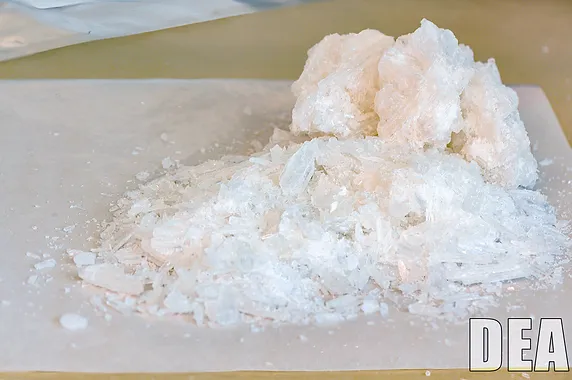
DEA: Schedule II Drug
Forms: Powder, tablets, crystal rocks
Ways Taken: Swallowed, snorted, smoked, injected
Meth (also known as Methamphetamine) is a very addictive stimulant drug. It is a powder that can be made into a pill or a shiny rock (called a crystal). The powder can be eaten or snorted up the nose. It can also be mixed with liquid and injected into your body with a needle.
Meth at first causes a rush of good feelings, but then users feel edgy, overly excited, angry, or afraid. Meth use can quickly lead to addiction. It causes medical problems including: Making your body temperature so high that you pass out, severe itching, broken teeth, thinking and emotional problems. Meth use can cause paranoia, hallucinations, repetitive behavior (such as compulsively cleaning, grooming, or disassembling or assembling objects), obsessive scratching of skin (often users will have delusions of parasites or insects crawling under the skin), psychosis, often exhibited as violent, aggressive behavior, dental problems, convulsions, changes in brain structure, strokes, heart attack and death.
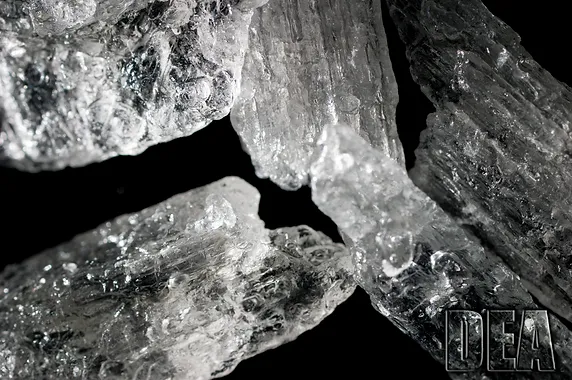
DEA: Schedule II Drug
Forms: Glass or shiny blue-white rocks of vary sizes
Ways Taken: Smoked
Crystal Meth (methamphetamine) is an addictive stimulant that strongly activates certain systems in the brain. It is a powder that can be made into a pill or a shiny rock (called a crystal).
Crystal Meth is a crystal-like powdered substance that sometimes comes in large rock-like chunks. The powder sometimes flakes off the rock, making the shards look like glass. Young people hear that by smoking crystal meth, a person experiences an intense “high” or “rush” that lasts only a few minutes and is described as extremely pleasurable. They also may try meth since it can produce a feeling of extreme wakefulness. Crystal Meth is addictive, and a person can develop a tolerance quickly, needing increasingly larger amounts to get high. Chronic use of crystal meth can cause paranoia, hallucinations, repetitive behavior (such as compulsively cleaning, grooming or disassembling and assembling objects), and delusions of parasites or insects crawling under the skin that can lead to obsessive scratching to get rid of these imagined insects. Long-term use, high dosages, or both can bring on psychosis (often exhibited as violent, aggressive behavior). This violent, aggressive behavior is usually coupled with extreme paranoia. Crystal Meth use can also cause severe dental problems, convulsions, changes in brain structure, strokes, heart attack and death.
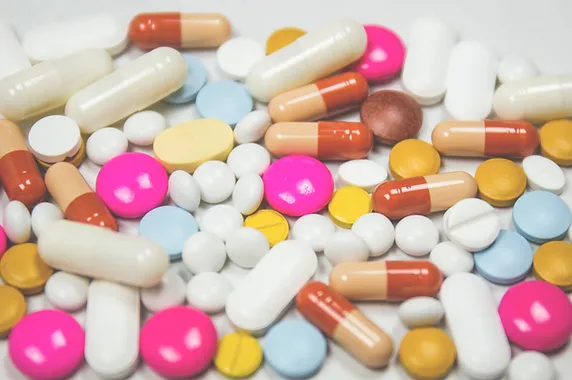
Benzodiazepine Street Titles: Also known as Benzos, Downers.
DEA: Schedule IV Drug
Forms: Tablet, capsule, liquid
Ways Taken: Swallowed, snorted
Benzodiazepines are depressants that produce sedation and hypnosis, relieve anxiety and muscle spasms, and reduce seizures.
Shorter-acting benzodiazepines used to manage insomnia. Short-acting benzodiazepine, is utilized for sedation, anxiety, and amnesia in critical care settings and prior to anesthesia. Abuse is frequently associated with adolescents and young adults who take the drug orally or crush it up and snort it to get high. Abuse is particularly high among heroin and cocaine users. Additionally, opioid users often co-abuse benzodiazepines to enhance euphoria. Benzodiazepines slow down the central nervous system and may cause sleepiness and relaxed mood. Benzodiazepines are associated with amnesia, hostility, irritability, and vivid or disturbing dreams. Its also causes extreme drowsiness, confusion, impaired coordination, decreased reflexes, respiratory depression, coma, and possible death. Overdose effects of concomitant use of benzodiazepines and opioids include: Profound sedation, respiratory depression, coma, and death.
DEA: Schedule IV Drug
Forms: Tablet
Ways Taken: Swallowed (as a pill or as dissolved in a drink), snorted
Rohypnol® is a trade name for flunitrazepam, a CNS depressant that belongs to a class of drugs known as benzodiazepines. This drug has never been approved for medical use in the United States by the FDA. Rohypnol® is also referred to as a “date rape” drug.
Adolescents may abuse Rohypnol® to produce a euphoric effect often described as a “high.” Rohypnol is also misused to physically and psychologically incapacitate victims targeted for sexual assault. The drug is usually placed in the alcoholic drink of an unsuspecting victim to incapacitate them and prevent resistance to sexual assault. Like other benzodiazepines, Rohypnol® slows down the functioning of the CNS producing: Drowsiness (sedation), sleep (pharmacological hypnosis), decreased anxiety, and amnesia (no memory of events while under the influence of the substance). Adverse effects include: Slurred speech, loss of motor coordination, weakness, headache, and respiratory depression. High doses of Rohypnol®, particularly when combined with CNS depressant drugs such as alcohol and heroin, can cause severe sedation, unconsciousness, slow heart rate, and suppression of respiration that may be sufficient to result in death.
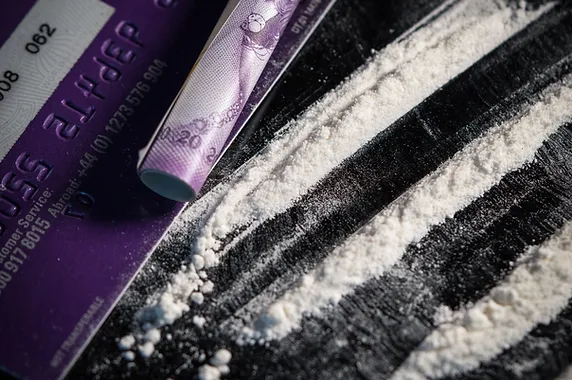
DEA: Schedule II Drug
Forms: White powder
Ways Taken: Injected, snorted
Cocaine is illegal. Cocaine base (crack) looks like small, irregularly shaped white rocks. Cocaine is an intense, euphoria-producing stimulant drug with strong addictive potential.
Cocaine is a very addictive drug that is made from leaves of the coca plant found in South America. It is mostly available as an illegal drug that some people use to get high. In rare cases, it is also used as a prescription drug for for anesthesia during certain surgeries. As a street (illegal) drug, cocaine is usually a fine, white, crystal powder. Street dealers sometimes mix it with cornstarch, talcum powder, or flour to make it look like they have more cocaine. That way they can make more money. They may also mix it with other illegal drugs. People snort cocaine powder through the nose or rub it into their gums. Others dissolve the powder and inject it into the bloodstream. Some people inject a combination of cocaine and heroin, called a “speedball.” Cocaine is a stimulant that can make people feel like they have more energy and are extra alert. But it can also make people feel restless, irritable, anxious, and paranoid. Large amounts of cocaine can lead to bizarre, unpredictable, and violent behavior. In some cases, cocaine can cause very serious health problems such as a heart attack, stroke, or coma.
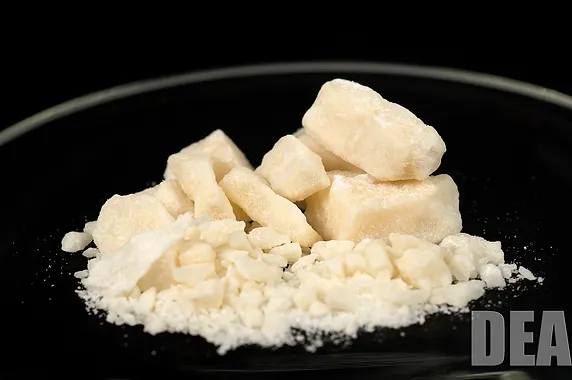
DEA: Schedule II Drug
Forms: Whitish rock crystal
Ways Taken: Smoked
Crack cocaine is illegal. Crack cocaine have a high potential for abuse. Abuse of these drugs may lead to severe psychological or physical dependence. Crack cocaine is a highly addictive and powerful stimulant that is derived from powdered cocaine using a simple conversion process.
Crack is produced by dissolving powdered cocaine in a mixture of water and ammonia or sodium bicarbonate (baking soda). The mixture is boiled until a solid substance forms. The solid is removed from the liquid, dried, and then broken into the chunks (rocks) that are sold as crack cocaine. Then the crack pieces are smoked in a pipe. Smoking crack cocaine delivers large quantities of the drug to the lungs, producing an immediate and intense euphoric effect. It got its name because it crackles when it is heated and smoked. Crack cocaine looks like white or tan pellets (sort of like gerbil or dry cat food). Both cocaine and crack are very addictive and very, very dangerous. In addition to the usual risks associated with cocaine use (constricted blood vessels; increased temperature, heart rate, and blood pressure; and risk of cardiac arrest and seizure), crack users may experience acute respiratory problems, including coughing, shortness of breath, and lung trauma and bleeding. Crack cocaine smoking also can cause aggressive and paranoid behavior.
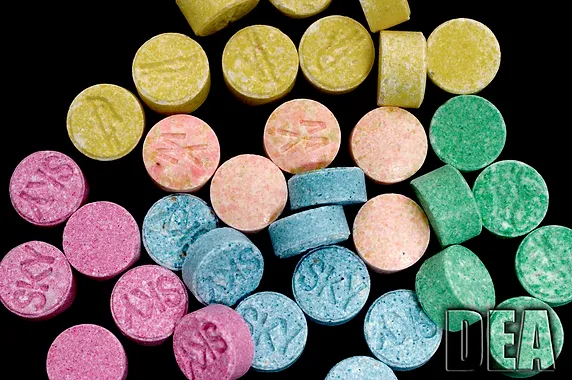
DEA: Schedule I Drug
Forms: Tablet, capsule, liquid, absorbent paper
Ways Taken: Swallowed, absorbed in mouth
LSD stands for lysergic acid diethylamide. It is an illegal street drug that comes as a white powder or clear colorless liquid. LSD is in a class of drugs called hallucinogens.
LSD is a mind-altering drug. This means it acts on your brain (central nervous system) and changes your mood, behavior, and the way you relate to the world around you. LSD affects the action of a brain chemical called serotonin. Serotonin helps control behavior, mood, the senses, and thinking. These are substances that cause hallucinations. These are things that you see, hear, or feel while awake that appear to be real, but instead of being real, they have been created by the mind. LSD users call their hallucinogenic experiences “trips.” The danger of LSD is that its effects are unpredictable. This means when you use it, you do not know if you will have a good trip or a bad trip. There is no way to know how it will affect you. You may feel as if you are floating and disconnected from reality. You may feel joy. You believe you have superhuman strength and are not afraid of anything. Your senses may become distorted. Shapes and sizes of objects may be altered. Or your senses may “cross over.” You may feel or hear colors or see sounds. You may have terrifying thoughts.
DEA: Schedule I Drug
Forms: Fresh or dried mushrooms
Ways Taken: Swallowed (eaten, brewed as tea)
Psilocybin (known as Magic Mushrooms) is part of a group of drugs called psychedelics or hallucinogens that have the potential to change a person’s sense of reality, leading them to see, hear, and feel things that are not happening in real life, or to experience reality in a different way.
Psilocybin is a chemical that comes from certain types of mushrooms found on nearly every continent. The mushrooms, which are also known as shrooms or magic mushrooms, are typically consumed dried or powdered. When a person takes psilocybin, their body converts it to another substance, psilocin. The substance also affects how the brain works and how different brain regions communicate with each other. These altered patterns of brain activity contribute to a person’s profound change in consciousness. Magic mushrooms typically cause shifts in how a person perceives reality. People may see colors, shapes, or scenes; hear things that aren’t real; or lose their sense of time and space. Psilocybin typically raises blood pressure and heart rate, which may be dangerous for people with heart conditions. Some people who take magic mushrooms have extreme fear, anxiety, panic, or paranoia as they experience its hallucinogenic effects, which is known as a “bad trip.”
DEA: Schedule I Drug
Forms: Fresh or dried buttons, capsule
Ways Taken: Swallowed (chewed, drunk with water)
Peyote is a small, spineless cactus. The active ingredient in peyote is the hallucinogen mescaline. Mescaline can be extracted from peyote or produced synthetically.
The fresh or dried buttons are chewed or soaked in water to produce an intoxicating liquid. Peyote buttons may also be ground into a powder that can be placed inside gelatin capsules to be swallowed, or smoked with a leaf material such as cannabis or tobacco. Following the consumption of peyote and mescaline, users may experience: Intense nausea, vomiting, dilation of the pupils, increased heart rate, increased blood pressure, a rise in body temperature that causes heavy perspiration, headaches, muscle weakness, and impaired motor coordination. Abuse of peyote and mescaline will cause varying degrees of: Illusions, hallucinations, altered perception of space and time, and altered body image. Users may also experience euphoria, which is sometimes followed by feelings of anxiety.
DEA: Schedule I Drug
Forms: Colored tablets with logos, capsules, powder, liquid
Ways Taken: Snorted, swallowed
MDMA (Methylenedioxymethamphetamine), also called Ecstasy and Molly. MDMA is an illegal synthetic drug that acts as a stimulant and hallucinogen. It’s also known as a common type of club drug most often used by young adults at bars, concerts, nightclubs, and parties.
Ecstasy is often used to refer to MDMA in the tablet or capsule form, which is the most common way people take the drug. They act on the central nervous system and can cause changes in mood, awareness, and behavior. Ecstasy (Club Drug) are also sometimes used as “date rape” drugs. These drugs are very powerful. Ecstasy is a date rape drug used to make sexual assault easier. Someone could put one in your drink when you are not looking. Or you may be drinking alcohol or taking a drug, and a person may make it stronger without you knowing. Alcohol can make the effects of drugs even stronger and can cause serious health problems, even death. MDMA can cause long-lasting confusion, depression, problems with attention, memory, and sleep; increased anxiety, impulsiveness; less interest in sex.
DEA: Schedule I Drug
Forms: Tablet, capsule, powder
Ways Taken: Swallowed, snorted
2C-B (4-bromo-2,5-dimethoxyphenethylamine) is a synthetic psychedelic drug of the 2C family, mainly used as a recreational drug. 2C-B is abused for its hallucinogenic effects.
2C-B first became popularized in the United States as a short-lived substitute for the street drug ecstasy (MDMA). It is abused for its hallucinogenic effects primarily as a club drug in the rave culture and “circuit” party scene. 2C-B is used by the same population as those using “Ecstasy” by high school and college students, and other young adults who frequent “rave” or “techno” parties. The drug has been misrepresented by distributors and sold as other hallucinogens such as MDMA and LSD. Some users abuse 2C-B in combination with LSD (referred to as a “banana split”) or MDMA (called a “party pack”).
DEA: Schedule I Drug
Forms: Tablet
Ways Taken: Swallowed
DOM (2,5-Dimethoxy-4-methylamphetamine) also known as “STP” short for “Serenity, Tranquility and Peace” which is a psychedelic and a substituted amphetamine of the phenethylamine class with a street name STP. DOM is illegal to manufacture, buy, possess, or distribute (make, trade, own or give) without a DEA license.
Effects of this drug DOM include substantial perceptual changes such as blurred vision, multiple images, vibration of objects, visual alterations, distorted shapes, enhancement of details, slowed passage of time, increased sexual drive and pleasure, and increased contrasts. It may cause mystical experiences and changes in consciousness. It may also cause pupillary dilation and a rise in systolic blood pressure. DOM, which is chemically related to mescaline and amphetamine, is about 100 times more potent as a hallucinogen than mescaline and only one-thirtieth as potent as lysergic acid diethylamide. Like more well known hallucinogens, such as LSD and Magic Mushrooms, STP induces an altered state of mind in users known as a ‘trip’. It can result in trips of over 24 hours.
DEA: Schedule I Drug
Forms: Tablet
Ways Taken: Swallowed
2,4,5-Trimethoxyamphetamine (abbreviated TMA-2) is a synthetic psychedelic amphetamine known to produce a unique spectrum of hallucinogenic and stimulant effects that differ substantially from other psychoactive phenethylamines.
TMA-2 has been much more widely used as a recreational “designer drug” and sold on the black market as a “research chemical” through the use of online vendors. The “body high” of TMA-2 is manifested as somewhat intense in comparison to most classical psychedelics such as LSD. The sensation itself can be described as a constantly present yet somewhat mild energetic pins and needles sensation that encompasses a person’s entire body. TMA-2 can cause side effects such as psychosis, seizures, anxiety, paranoia, agitation, confusion, increased heart rate and blood pressure, palpitations, chest pain, and difficulty breathing. In general, TMA-2 does carry the risk of overdose especially when abused, taken in high doses, used in conjunction with other medications or illicit substances, or if used by those with pre-existing heart, neurological, psychiatric, liver, or kidney disease. In extreme cases, TMA compounds can cause heart attacks, stroke, or other cardiovascular events.
DEA: Schedule I & II Drug
Forms: Powder, tablet, capsule, liquid
Ways Taken: Injected, snorted, swallowed, smoked
Phencyclidine (PCP) is in a class of drugs called hallucinogens. It is an illegal street drug that usually comes as a white powder, which can be dissolved in alcohol or water. It can be bought as a powder or liquid. PCP is a dangerous drug that was originally developed as an anesthetic.
PCP is a mind-altering drug. This means it acts on your brain (central nervous system) and changes your mood, behavior, and the way you relate to the world around you. PCP can make users feel detached from their bodies and their surroundings. It can also distort a user’s perceptions of sight, sound, and reality. The drug is known for giving users a false sense of strength, power, and invincibility. Higher doses of PCP can cause hallucinations including anxiety, delusions, paranoia, trouble forming coherent thoughts, suicidal thoughts, and bizarre behavior. PCP users can get violent. People who use PCP can get psychologically addicted to it. Addiction can lead to tolerance. Tolerance means you need more and more PCP to get the same high. Long-term use can lead to mental and physical cravings for the drug and compulsive behavior to get and take it. Because the drug is so addictive, users keep taking it even when they know the health problems PCP causes.
DEA: Schedule III Drug
Forms: Liquid, white powder
Ways Taken: Injected, snorted, smoked, swallowed
Ketamine (KET-eh-meen) hydrochloride is a quick-acting anesthetic that is legally used in both humans (as a sedative for minor surgery) and animals (as a tranquilizer). At high doses, it causes intoxication and hallucinations similar to LSD.
Ketamine is often used along with other drugs such as Ecstasy (called kitty flipping) or cocaine or sprinkle it on marijuana blunts. Sometimes used as a date rape drug to facilitate sexual assault crimes. People who use ketamine can become psychologically dependent on it to feel good, deal with life, or handle stress. At higher doses, ketamine causes movement problems, body numbness, and slowed breathing. It also causes problems with attention, learning, and memory; dreamlike states, hallucinations; sedation; confusion; loss of memory; raised blood pressure; unconsciousness; dangerously slowed breathing. Overdosing on ketamine can stop breathing and cause death.
DEA: Schedule I Drug
Forms: Dried, shredded plant material
Ways Taken: Smoked, swallowed
Delta-8 tetrahydrocannabinol (also known as delta-8 THC), is a psychoactive substance found in the Cannabis sativa plant, of which marijuana and hemp are two varieties. As a result, concentrated amounts of delta-8 THC are typically manufactured from hemp-derived cannabidiol (CBD). CBD is related to THC, but it’s not psychoactive, so it doesn’t make you “high” like THC does. It is important for consumers to be aware that delta-8 THC products have not been evaluated or approved by the FDA for safe use in any context. They may be marketed in ways that put the public health at risk and should especially be kept out of reach of children and pets. The FDA has not approved the cannabis plant for any medical use. However, the FDA has approved several drugs that contain individual cannabinoids.
As of 2023, 38 states, four territories, and the District of Columbia in the United States allow medical use of cannabis (in which THC is the primary psychoactive component). THC comes in three common forms, herbs or flowers, hash/hashish, and hash oil. The herbal variety is the most popular. It’s made from dried cannabis leaves and flowers, or buds, which you smoke or add to foods or drinks. Edible products made with THC includes gummies, chocolates, cookies, brownies, etc.) which can have intoxicating effects. An effect that makes you feel “high” when you eat them. The most common adverse effects of THC usage are dysphoria, hallucinations, and paranoia. Other adverse effects include sedation, confusion, headache, dry mouth, euphoria, hypotension and even seizures.
DEA: Not Scheduled (but labeled drug of concern by DEA and illegal in some states)
Forms: Fresh or dried leaves
Ways Taken: Smoked, chewed, or vaporized
Salvia (salvia divinorum) is a perennial herb in the mint family that is abused for its hallucinogenic effects. It is a psychedelic drug, which means it can affect all the senses, altering a person’s thinking, sense of time and emotions. Psychedelics can cause a person to hallucinate, seeing or hearing things that do not exist or are distorted.
Salvia fresh leaves are held under the tongue (also called sublingual absorption) and the Salvia dried leaves are smoked in a bong or mixed with tobacco and smoked as a cigarette. Salvia is also used as a tincture or tea and in some countries, commercially extracted products are available. Psychic effects include perceptions of bright lights, vivid colors, shapes, and body movement, as well as body or object distortions. May also cause fear and panic, uncontrollable laughter, a sense of overlapping realities, paranoia, and hallucinations. Users typically experience rapid onset of intense hallucinations that can impair judgment and disrupt sensory and cognitive functions. Adverse physical effects may include: Loss of coordination, dizziness, and slurred speech.
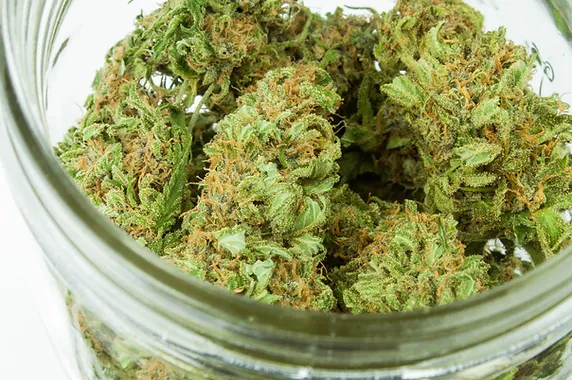
DEA: Schedule I Drug
Forms: Mixture of dried, leaves, stems, seeds, flowers
Ways Taken: Smoked, Vaped, Eaten
Marijuana is a mind-altering psychoactive drug that is highly addictive. Dry, shredded, green/brown mix of flowers, stems, seeds and leaves from the cannabis sativa plant. THC (delta-9-tetrahydrocannabinol) is the main ingredient that produces the psychoactive effect. The plant contains chemicals which act on your brain and can change your mood or consciousness.
The marijuana plant has chemicals that can help with some health problems. More states are making it legal to use the plant as medicine for certain medical conditions. The FDA has not approved it. Marijuana is still illegal at the national level. Marijuana can cause health problems, including changes in mood, problems with body movement, problems with brain development, trouble with thinking, problem-solving, memory, and learning. Coughing and breathing problems, if you smoke marijuana frequently. It is possible to overdose on marijuana, if you take a very high dose. Symptoms of an overdose include anxiety, panic, and a rapid heartbeat. In rare cases, an overdose can cause paranoia and hallucinations.
DEA: Schedule I Drug
Forms: Dried, shredded plant material
Ways Taken: Smoked, swallowed (brewed as tea)
Synthetic Cannabinoids are also known as Synthetic Marijuana, K2 or Spice. These products are being abused for their psychoactive properties and are packaged without information as to their health and safety risks.
Synthetic Marijuana, K2 and Spice are just three of the many trade names or brands for synthetic designer drugs that are intended to mimic THC, the main psychoactive ingredient of marijuana. These designer synthetic drugs are from the synthetic cannabinoid class of drugs that are often marketed and sold under the guise of “herbal incense” or “potpourri.” These products are being abused by spraying or mixing the synthetic cannabinoids on plant material provides a vehicle for the most common route of administration, smoking (using a pipe, a water pipe, or rolling the drug-laced plant material in cigarette papers). In addition to the synthetic cannabinoids laced on plant material and sold as potpourri and incense, liquid cannabinoids have been designed to be vaporized through both disposable and reusable electronic cigarettes.
State public health and poison centers have issued warnings in response to adverse health effects associated with abuse of herbal incense products containing these synthetic cannabinoids. These adverse effects included tachycardia (elevated heart rate), elevated blood pressure, unconsciousness, tremors, seizures, vomiting, hallucinations, agitation, anxiety, pallor, numbness, and tingling.

Forms: Liquid
Ways Taken: Drink
Alcohol is a central nervous system depressant. This means that it is a drug that slows down brain activity. It can change your mood, behavior, and self-control. Alcohol use disorder (AUD) is a condition characterized by an impaired ability to stop or control alcohol use despite adverse social, occupational, or health consequences. It is a spectrum disorder and can be mild, moderate, or severe and encompasses the conditions that some people refer to as alcohol abuse, alcohol dependence, or the colloquial term, alcoholism.
Alcohol, like other drugs, has a powerful effect on the brain, producing pleasurable feelings and blunting negative feelings. These feelings can motivate some people to drink alcohol again and again, despite possible risks to their health and well-being. For example, research shows that over time, drinking to cope with stress while it may provide temporary relief from emotional discomfort tends to enhance negative emotional states between bouts of alcohol consumption. These changes can motivate further drinking and cause an individual to become stuck in an unhealthy cycle of alcohol consumption.
Alcoholism is linked to many health and social consequences, including interference with personal relationships, heart and liver diseases, cancers, motor vehicle collisions and other accidents, alcohol overdose, violence, homicide, and suicide.
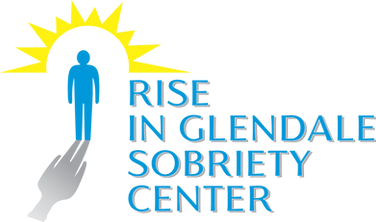
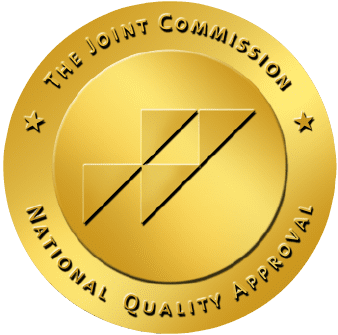
3449 Stancrest Drive,
Glendale, CA 91208
License Number: 191304AP
Effective Date: 2/1/2024
Expiration Date: 1/31/2025
RISE in Glendale Sobriety Center
3449 Stancrest Drive,
Glendale, CA 91208
General Email:
info@risesobrietycenter.com
General Info & Admissions:
(747) 255-7083
For any general inquiries, please fill in the following contact form:
© 2025 Rise in Glendale Sobriety Center, Inc. All Rights Reserved.